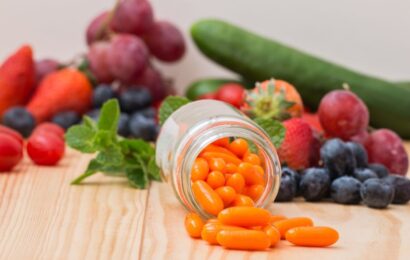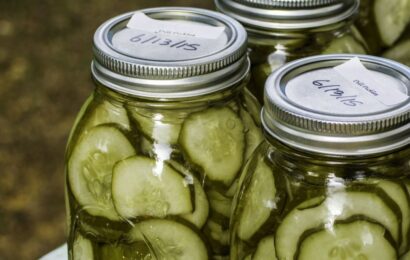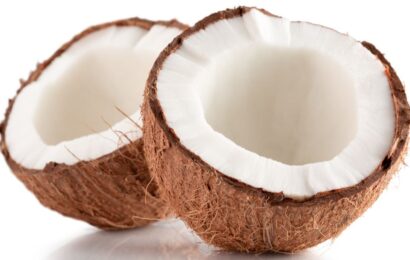Is there anything better than a thick slice of cold watermelon on a hot summer’s day? In terms of refreshment, watermelon just can’t be beat. Watermelon is such a fan fav that it even has its own special day: August 3 is National Watermelon Day! What better time to celebrate by eating this juicy fruit!
If you have diabetes, you might be a wee bit hesitant to eat watermelon, though. After all, watermelon is a fruit and contains natural sugar. How will eating watermelon affect your blood sugars? And deliciousness aside, is it actually a healthy food to eat? Read on!
To get cutting-edge diabetes news, strategies for blood glucose management, nutrition tips, healthy recipes, and more delivered straight to your inbox, sign up for our free newsletter!
Watermelon: fruit or vegetable?
Most of us don’t stop to consider if watermelon is a fruit or vegetable — our main focus is to dig in and enjoy. But if you’re a food facts buff, you might be interested to learn that watermelon is both a fruit and a vegetable. Here’s why: botanically, watermelon is a fruit, just like tomatoes and pumpkins are fruit, according to the website www.watermelon.org. Although it has the word “melon” in its name, it’s not in the same genus as other types of melon.
Instead, watermelon is a member of the Cucurbitaceae plant family of gourds (other members include cucumber, squash and pumpkin). And it’s grown in a garden like other vegetables. If you live in Oklahoma, watermelon just so happens to be the state vegetable (as of 2007). So, yes, watermelon can actually “count” as a vegetable. (Kids, now you have every right to tell your parents this!)
Watermelon’s history
Watermelons originated in South Africa about 5,000 years ago. But ancient watermelons were not the bright, juicy, tasty watermelons of today. Instead, they were hard, pale and quite bitter. The ancient Egyptians enjoyed watermelons, too; seeds and images of this fruit even appeared in tombs. The Egyptians began the process of breeding out the bitterness and hard texture; other groups of people who cultivated watermelons did the same. Even the shape of the “original” watermelon began to change with breeding from round to oblong, and the watermelon flesh morphed from pale to bright red.
Further cultivation enabled watermelon with fewer seeds and eventually, a more modern version of watermelon with no seeds.
Today, there are more than 1,200 varieties of watermelon in the world. But according to the website www.whataboutwatermelon.com, only about 50 varieties are enjoyed regularly. In general, though, five terms are used to distinguish the various watermelon varieties based on their characteristics:
Seeded watermelon
These contain the traditional black seeds and weigh between 15 and 45 pounds.
Seedless watermelon
They have small, edible white seeds and weigh around 15 pounds.
Miniature watermelon
They’re smaller and have a thin rind.
Orange or yellow watermelon
These lack lycopene (an antioxidant that gives watermelon and tomatoes their red color) and generally weigh between 5 and 18 pounds. They also tend to be sweeter than red watermelons.
You might even come across square or cubic watermelons. These watermelons don’t naturally grow in a square shape; rather, they are grown using a square-shaped mold. Why? Invented in Japan, square watermelons are more compact, take up less room on a refrigerator shelf, and won’t roll off the counter. The downside of square watermelons is that they don’t taste as sweet as their rounder siblings and they cost a pretty penny (or should we say, dollar) — up to $100 per melon! Hardly economical for most people.
Watermelons are grown in more than 96 countries worldwide, and the United States ranks number seven in production. The majority of domestic watermelon crops are grown in Florida, Georgia, Texas and California, as these states have the right climate for a long, slow growing season.
Watermelon nutrition
Are watermelons really mostly water? Well, yes! A watermelon is about 92% water and 6% sugar. Its high water content is what makes this fruit (or vegetable) so delicious when the temperature is soaring. Let’s take a look at watermelon’s nutrition profile.
A medium-sized wedge of watermelon (10 ounces) contains:
· 86 calories
· 22 grams of carbohydrate
· 1 gram of fiber
· 2 grams of protein
· 0 grams of fat
· 320 milligrams of potassium
· 3 milligrams of sodium
If you prefer your watermelon diced, 1 cup of cubes contains:
· 46 calories
· 12 grams of carbohydrate
· 0.6 grams of fiber
· 1 gram of protein
· 0 grams of fat
· 170 milligrams of potassium
· 2 milligrams of sodium
About half of the carbohydrate in watermelon comes from fructose, a quarter from glucose and the rest from sucrose and other types of sugar.
Watermelon contains other nutrients, too, including vitamin A, vitamin C, B vitamins, potassium, magnesium and lycopene, an antioxidant that gives red watermelon its color. Watermelon actually has about 40% more lycopene than tomatoes. Note that watermelon is extremely low in sodium (good news for those with high blood pressure) and contains a good amount of potassium. (If you need to limit your potassium intake, check with your dietitian about how to best fit watermelon into your eating plan.)
Health benefits of watermelon
Watermelon definitely has some merits when it comes to supporting good health. These include:
· Helping you stay hydrated, thanks to its water content
· Providing vitamin C, a potent antioxidant that also promotes healthy skin and hair
· Providing vitamin A which is needed for eye health and a healthy immune system
· Providing lycopene, an antioxidant that can lower the risk of some types of cancer and reduce the risk of heart attack and stroke
· Helping to support a healthy weight, thanks to its water content and small amount of fiber that can help you feel more full
· Good digestion — the water and fiber also help keep things moving through your digestive tract, helping to prevent constipation
Although watermelon is not a good source of protein, it contains an amino acid called citrulline that has been shown in studies to reduce muscle soreness after a workout.
Watermelon and diabetes
You might be feeling a little skeptical about watermelon, despite its health benefits. After all, it contains carbohydrate. As with any food that contains carbohydrate, if you overdo the portion, there’s a very good chance it will impact your blood sugar, causing it to rise.
For this reason, it’s always wise to know what your carb goals are for meals and snacks and limit your portions. (If you’re not sure, ask a dietitian or your diabetes educator). You can easily enjoy watermelon if you budget for it — this might mean having a cup of watermelon cubes (around 15 grams of carb) for an afternoon snack, or having a wedge of watermelon as a dessert with dinner and eating a little less rice, potato or pasta, for example.
In terms of glycemic index, watermelon’s is 76, which puts it into the “high” category. Remember that the glycemic index is a gauge of how fast a carbohydrate food causes the blood sugar to rise. But before you shy away from watermelon for this reason, consider this: watermelon’s glycemic load (which considers portion size) is only 6 for a wedge, and just 1.5 for a cup of cubes. So it can definitely be part of a diabetes eating plan.
Weird and not so weird watermelon facts
Can’t get enough of watermelon? You might be interested to know some other random facts and tips about this tasty fruit.
· When choosing a watermelon, make sure it’s firm and has no nicks or dents. The spot where the watermelon rests on the grown when it’s growing should be a creamy yellow. And if you give it a thump, it should have a hollow sound, not a dull one.
· If you’re in China or Japan and want to impress your dinner host, bring a watermelon as a gift.
· Try freezing cubes of watermelon to add to a glass of water, unsweetened iced tea, or sugar-free lemonade.
· Swallowing a watermelon seed does NOT mean that a watermelon will grow in your stomach (an old wives’ tale!), so go ahead and enjoy the black or tan seeds. Try roasting them in a 325°F oven for about 15 minutes.
· No need to let the watermelon rind go to waste — try cutting it up and stir-frying it with your other veggies. Or try your hand at pickling the rind (check out a recipe here).
· Seedless watermelons are not genetically modified; rather, they have been hybridized, which is an interbreeding between different species.
· Several years ago, there were rumors that purple and blue watermelons were available. And companies were even selling purple watermelon seeds online (watermelons grown from those seeds had red flesh). Unfortunately, this was all a hoax.
· Watermelon has been touted as being a “natural Viagra,” possibly helping with erectile dysfunction. There’s some evidence to support this, but watermelon is likely not as effective as Viagra and may not work for all men.
· Watermelons are actually pretty easy to grow. If you’ve got the land, you might give it a go (just keep in mind that watermelons need a long, warm growing season). Check out growing tips here.
· Watermelon is perfect as is, but it’s also very versatile. Add it to your morning smoothie, or to salads or even homemade salsa. You can even grill it! Chill out with this simple but stunning dessert.
Want to learn more about fruits and health? Read “Fruit Nutrition Facts.”





